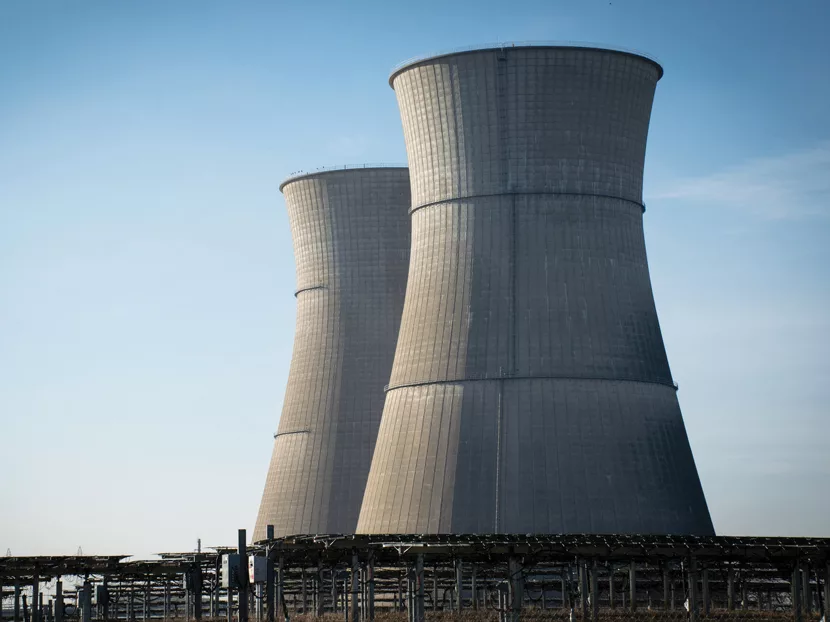According to the prestigious and well-informed observer, Kiplinger, nuclear power may quicken its future growth. Although foreign competition is escalating, this is coming at a time when power plants also are closing, fighting bankruptcy — and increasing climatological restraints are getting tighter.
On the positive side, nuclear power still generates 20 percent of U.S. electricity, which is more than wind and hydropower combined. Nuclear power, therefore, would seem to indicate a smaller, if solid base for growth, despite the previously cited negatives.
Looking forward, nuclear power plants are struggling to compete in a world awash in cheap natural gas. Seven U.S. nuclear power plants have closed since 2013.
With new projects facing numerous obstacles, only one new power plant has been completed in the last 20 years. Two others have received the go-ahead from federal regulators but find the startup cost-prohibitive.
And global competition is fierce, primarily Rostov, Russia’s state-owned nuclear company. It leads the way, with none of the U.S. hindrances facing it. A major American calamity has been Westinghouse, which went bankrupt in 2017. China also is on the rise in the nuclear energy race and aims to sell a third of global nuclear exports by 2030.
In contrast, smaller reactors, which make nuclear power affordable and improve safety, are being instigated. Also helping is federal and state financial support. The U.S. Congress passed legislation supporting nuclear development and streamlining regulation. At the time of this writing, five states are already implementing the legislation: Connecticut, Illinois, New Jersey, New York and Ohio.
All are offering active financial support to nuclear power plants that would otherwise be slated for retirement or severely reduced. Advocates also hope that more states will follow the level of New Mexico and Washington — giving credit to nuclear power as a source of clean energy and making it eligible for tax incentives.
Nuclear power is showing an improving public image, which was tarnished by a series of accidents in recent decades that generated a negative attitude toward this development of clean energy.
The latest polling data indicates that Americans are roughly split on nuclear power today. This is an improvement from a few years ago when a majority opposed it.
To the unsolved problems of nuclear waste storage, federal regulations are currently studied for decisive Congressional action. These are projected for New Mexico and Texas. Power plants have been handling the waste on their own in recent years, after plans for permanent storage stalled in Nevada.
Global Economic Growth
As the top economically strong global nations face a new decade, the United States represents the only certain national growth factor, vaulting up from an already strong growth position. Only the presidential takeover by the far left in this year’s November election stands in the way of this assurance.
While China, India, Japan, Germany and the United Kingdom join the United States at the top in terms of economic growth, they are facing more problems than opportunities as the rocky year 2019 ended.
While China seemed to be in a strong position to give the U.S. a run for its money, President Trump’s strong stand against the Beijing Bullies has found China’s “technological theft” and free-wheeling “price-cutting” no longer available. And the economic effect of the coronavirus is yet to be determined.
In singling out America’s dynamic growth in the manufacturing sector and export expansion, neither China, Japan, Germany or the UK are blessed with the robust growth opportunities facing the United States and its manufacturing rebirth. 2020 will be the tell-tale year of the predicted significant upswing.
In citing the possibilities represented by the aforementioned competition, the following will likely happen in 2020:
1. China may already have seen its best days as its gross domestic product had challenged America’s No. 1 spot. It’s continual and growing Hong Kong takeover determination joins substantial job losses and “door-shutting” of U.S. technology as a major negative.
2. Germany, which had been sailing along smoothly for decades after being rebuilt with American help, is desperately looking for stimulus to revive its fading economic strength.
3. Japan seemed to have dominated the greater Pacific sector as Japanese skill and ingenuity in manufacturing drove it to automotive excellence, as well as other varied products, peaking in the United States in the 1980s. This coincided with the rise of China as a U.S export factor, which quickly became as strong, if not more powerful, than the Japanese.
4. The United Kingdom has held its own in the current century, but not in keeping with its centuries-old progeny, the United States. With its colonial arena faded away, and Brexit soon in the works, Britain will likely do well by just holding its own.
5. Although too much attention is paid to the political goings-on in Washington, the “dominant emergence” of the Green New Deal could scuttle America’s magnificent global future position and keep the United States from regaining its singular world influence.
The year 2020 will likely go a long way toward solidifying these projections.






